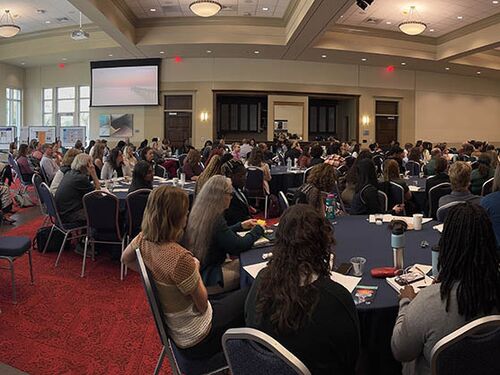WASHINGTON — Hydraulic fracturing has a low risk for inducing earthquakes that can be felt by people, but underground injection of wastewater produced by hydraulic fracturing and other energy technologies has a higher risk of causing such earthquakes, says a
new report from the National Research Council. In addition, carbon capture and storage may have the potential for inducing seismic events, because significant volumes of fluids are injected underground over long periods of time. However, insufficient information exists to understand the potential of carbon capture and storage to cause earthquakes, because no large-scale projects are as yet in operation. The committee that wrote the report said continued research will be needed to examine the potential for induced seismicity in large-scale carbon capture and storage projects. The report examines the potential for energy technologies -- including shale gas recovery, carbon capture and storage, geothermal energy production, and conventional oil and gas development -- to cause earthquakes. Hydraulic fracturing, commonly known as fracking, extracts natural gas by injecting a mixture of water, sand, and chemicals in short bursts at high pressure into deep underground wells. The process cracks the shale rock formation and allows natural gas to escape and flow up the well, along with some wastewater. The wastewater can be discarded in several ways, including injection underground at a separate site. Carbon capture and storage, also known as carbon capture and sequestration, involves collecting carbon dioxide from power plants, liquefying it, and pumping it at high rates into deep underground geologic formations for permanent disposal. Geothermal energy harnesses natural heat from within the Earth by capturing steam or hot water from underground. Although induced seismic events associated with these energy technologies have not resulted in loss of life or significant damage in the United States, some effects have been felt by local residents and have raised concern about additional seismic activity and its consequences in areas where energy development is ongoing or planned. While scientists understand the general mechanisms that induce seismic events, they are unable to accurately predict the magnitude or occurrence of these earthquakes due to insufficient information about the natural rock systems and a lack of validated predictive models at specific energy development sites. The factor most directly correlated with induced earthquakes is the total balance of fluid introduced or removed underground, the committee said. Because oil and gas development, carbon capture and storage, and geothermal energy production each involve net fluid injection or withdrawal, all have at least the potential to induce earthquakes that could be felt by people. However, technologies designed to maintain a balance between the amounts of fluid being injected and withdrawn, such as most geothermal and conventional oil and gas development, appear to produce fewer induced seismic events than technologies that do not maintain fluid balance. A number of federal and state agencies have regulatory oversight related to different aspects of underground injection activities associated with energy technologies. Responses from these agencies to energy development-related seismic events have been successful, the report says, but interagency cooperation is warranted as the number of earthquakes could increase due to expanding energy development. The study was sponsored by the U.S. Department of Energy. The National Academy of Sciences, National Academy of Engineering, Institute of Medicine, and National Research Council make up the National Academies. They are independent, nonprofit institutions that provide science, technology, and health policy advice under an 1863 congressional charter. Panel members, who serve pro bono as volunteers, are chosen by the Academies for each study based on their expertise and experience and must satisfy the Academies' conflict-of-interest standards. The resulting consensus reports undergo external peer review before completion. Contacts: Lorin Hancock, Media Relations OfficerShaquanna Shields, Media Relations AssistantOffice of News and Public Information202-334-2138; e-mail
news@nas.eduPre-publication copies of
Induced Seismicity Potential in Energy Technologies is available from the National Academies Press; tel. 202-334-3313 or 1-800-624-6242 or on the Internet at http://www.nap.edu. Reporters may obtain a copy from the Office of News and Public Information (contacts listed above).
NATIONAL RESEARCH COUNCILDivision on Earth and Life StudiesBoard on Earth Sciences and Resources Committee on Induced Seismicity Potential in Energy Technologies
Murray W. Hitzman (chair)Fogarty Professor of Economic Geology
Department of Geology and Geological Engineering
Colorado School of Mines
Golden
Donald D. ClarkeGeological Consultant
Long Beach, Calif.
Emmanuel DetournayProfessor
Department of Civil Engineering
University of Minnesota
Minneapolis, andPrincipal Research ScientistEarth Sciences and Resource EngineeringCSIROPerth, Australia
James H. Dieterich 1Distinguished Professor of Geophysics
Department of Earth Sciences
University of CaliforniaRiverside
David K. DillonPrincipal
David K. Dillon PE LLC
Centennial, Colo.
Sidney J. Green 2Research ProfessorUniversity of Utah
Salt Lake City
Robert M. HabigerChief Technology Officer
Spectraseis
Denver
Robin K. McGuire 2Engineering ConsultantBoulder, Colo.
James K. Mitchell 1,2University Distinguished Professor Emeritus
Virginia Polytechnic Institute and State University
Blacksburg
Julie E. ShemetaPresident and Founder
MEQ Geo Inc.
Highlands Ranch, Colo. John L. 'Bill' SmithGeothermal ConsultantSanta Rosa, Calif.
STAFF Elizabeth EideStudy Director
1 Member, National Academy of Sciences2 Member, National Academy of Engineering


